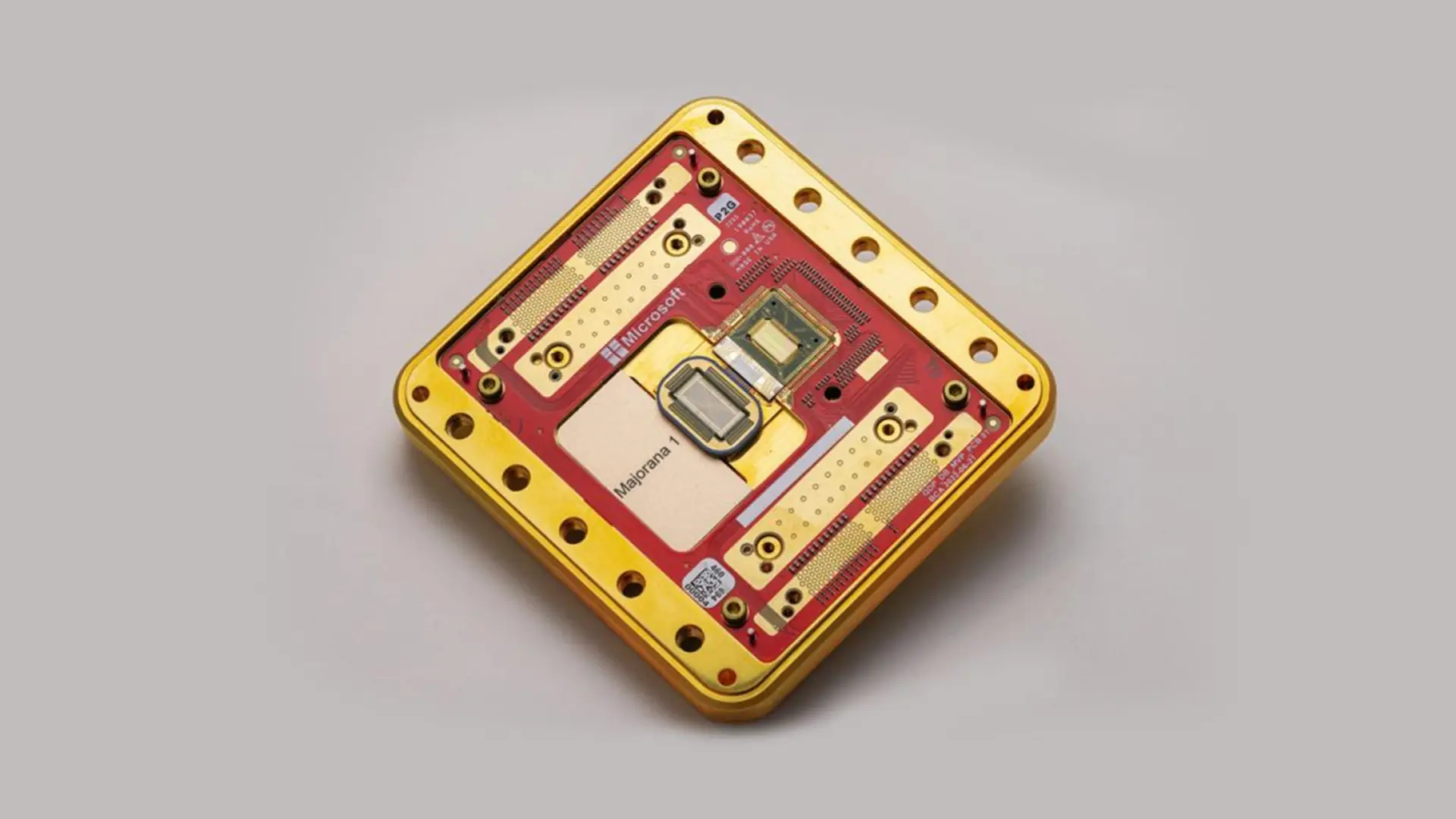Explainer: Understanding Microsoft’s Majorana 1 and the future of quantum computing
Microsoft’s Majorana 1 chip employs advanced topological qubits that shield quantum information from disturbances and reduce errors, offering a promising path toward scalable, reliable quantum computing.
Quantum computing might sound like something out of a science fiction movie, but it’s quite real and becoming increasingly practical. Microsoft’s new Majorana 1 (pronounced: maa-yoh-raa-naa) chip is a step toward building these powerful machines.
Unlike the computers people use today, which follow predictable steps to perform calculations, quantum computers work in a completely different way—using rules of quantum physics. It means they can explore many possibilities at once—imagine trying every key on a keyring, all together, to find the one that opens a door.
In this explainer, we will understand the Majorana 1 chip, how it works, and why it’s a pivotal breakthrough for the future of computing.
Quantum and classical computing: The difference
Think of a classical computer as a single worker checking items one by one, while a quantum computer is like a team of workers who can check many items at the same time because they work together in a highly coordinated way.
Classical computers use bits, which can only be in one of two states: 0 or 1. Think of them like a light switch—either off (0) or on (1). Their operations are sequential, where tasks are handled one after the other.
Meanwhile, quantum computers use qubits—almost like multitasking workers who can be in multiple states at once. A qubit can be off (0) or on (1), or it can be both at the same time (this is called superposition).
Further, qubits can become entangled, meaning even if they are far apart, changing one can affect another. This teamwork-like behaviour allows quantum computers to work on many calculations—all at once—solving problems that would take classical computers much longer.
What is Majorana 1?
Microsoft’s Majorana 1 chip is a new computer processor that could become the cornerstone of future quantum computers. Unlike the chips in today’s computers that work with simple on/off bits, Majorana 1 uses the rules of quantum physics to process information in a completely different way.
Named after Ettore Majorana, an Italian physicist known for his mysterious theories and disappearance, the chip reflects groundbreaking ideas in quantum physics.
How does Majorana 1 work?
Majorana 1 uses a special qubit called a topological qubit to perform calculations. Unlike standard qubits, which can be very fragile, topological qubits are designed to be more stable.
Consider two types of paper aeroplanes. The first one (a conventional qubit) is made from a single sheet of paper—it can fly well in a still room but gets easily thrown off by even a slight breeze. The second (a topological qubit) is built with extra folds and reinforcements, so it stays on course even when there’s a bit of wind.
Topological qubit design is based on principles from topology—a branch of mathematics that helps them resist disruptions from environmental noise like vibrations, minor temperature shifts, or electromagnetic interference.
In quantum computing, even a tiny disturbance can cause errors, a problem known as decoherence. Picture trying to balance on a wobbly board during a light breeze—it’s easy to lose balance. By using topological qubits, Majorana 1 minimises these errors, making its calculations more reliable.
Also, like most quantum technologies, the chip needs to be kept at extremely low temperatures—almost at absolute zero—to work properly. This is similar to how scientists use special freezers in their labs to keep sensitive experiments stable.
What are Majorana fermions, and why are they important?
Majorana fermions are unique because they act as their own antiparticles. Visualise a superhero who can both create and neutralise chaos at the same time.
In the Majorana 1 chip, these fermions form the foundation of topological qubits. Their special ability helps lock in quantum information securely—much like a built-in shock absorber in vehicles that smooths out the bumps from environmental disturbances.
This is significant because quantum computers are extremely sensitive to even tiny disruptions that can lead to errors. By using Majorana fermions, the chip’s qubits stay stable, reducing errors and making the quantum calculations more reliable.
What are topoconductors and topological qubits?
Topoconductors, a new kind of material used in the Majorana 1 chip, are made by combining indium arsenide (a semiconductor) with aluminium (a superconductor) using specially designed, gate-defined devices.
This mix creates a state called topological superconductivity, where electrical resistance drops to zero in a way that preserves quantum information.
This is significant because most regular chips use silicon, which is common and reliable but doesn’t offer these unique quantum properties. Topological superconductivity happens when electrons pair up in a special, protected way based on the material’s inherent geometry or topology.
Think of topoconductors as advanced, super-smooth highways for information. Even if there’s bad weather like vibrations or temperature fluctuations, the design keeps the data moving without disruption, much like the cars travelling safely on a well-engineered road.
This robustness is key for building stable topological qubits that can hold quantum information securely, reducing errors in quantum calculations.
What challenges does quantum computing face, and how does Majorana 1 address them?
Quantum computing faces two big hurdles. First, its building blocks—qubits—are sensitive to even the tiniest disturbances, much like a fragile instrument that goes out of tune with the slightest change in temperature or movement.
This sensitivity can lead to errors, meaning valuable quantum information might be lost or corrupted. Second, scaling up to a large number of qubits without them interfering with each other is a major challenge.
The Majorana 1 chip tackles these issues by using topological qubits made from Majorana fermions and topoconductors. For instance, moving from an old, fragile radio that easily falls out of tune to a sturdy, modern smartphone that keeps working even under rough conditions. This stronger design cuts down on errors, making it possible to build larger and more dependable quantum computers.
Measuring a quantum superposition can also introduce noise and disturb the delicate quantum state. Majorana 1 addresses this problem by using topological qubits. This means they are better at resisting the disturbances that occur during measurement, reducing noise and maintaining the quantum information more reliably.
What is Microsoft’s roadmap for quantum computing?
Right now, Majorana 1 has only a few qubits, but Microsoft’s roadmap is all about scaling up. It plans to make the technology even more error-resistant and add more qubits—eventually reaching a goal of a million qubits on one chip.
Consider starting with a small car engine and gradually upgrading it to a supercharged engine powerful enough to run a race car. That’s how scaling up these quantum systems could eventually unlock the ability to solve problems that today’s computers simply can’t handle.
What are the potential applications and implications of this technology?
Today’s quantum chips (including Majorana 1) are still in the testing phase but have huge potential. They could create nearly unbreakable encryption for secure data, simulate complex molecules to speed up drug discovery, and even design new materials with specific properties—tasks that our current computers struggle with.
Imagine trying to build a puzzle with millions of pieces using just one hand; that’s what classical computers are like when tackling these complex problems. Quantum chips promise a more powerful, efficient way to solve challenges that could transform fields from cybersecurity to medicine.
Edited by Suman Singh







